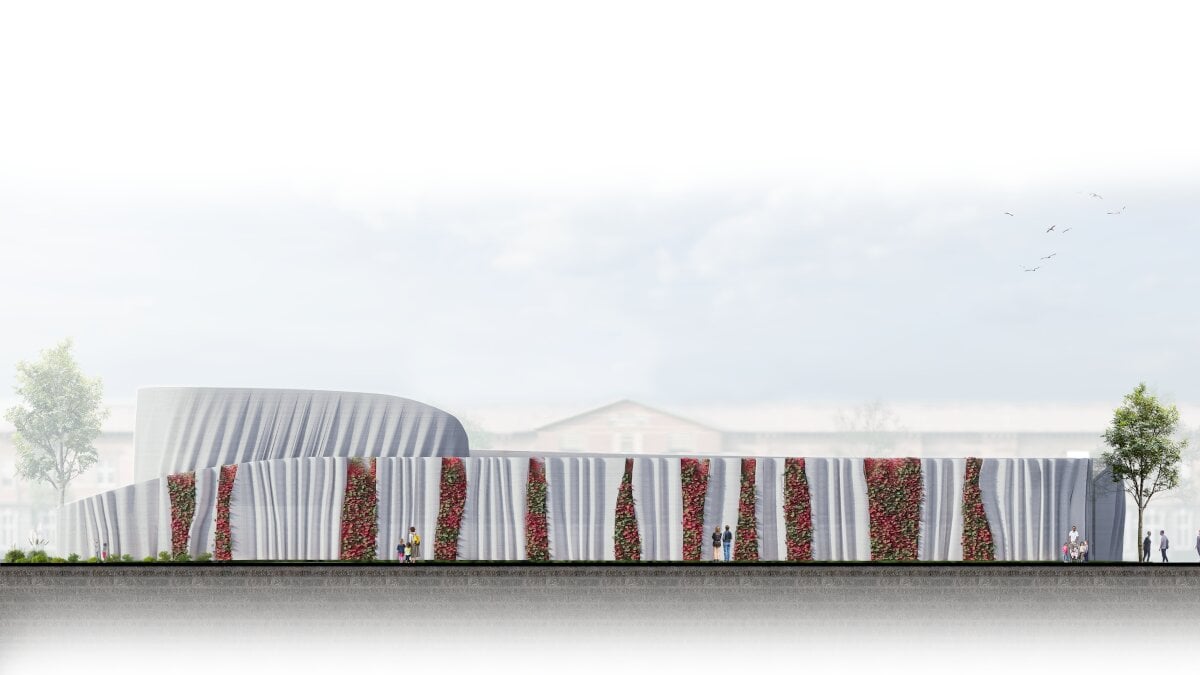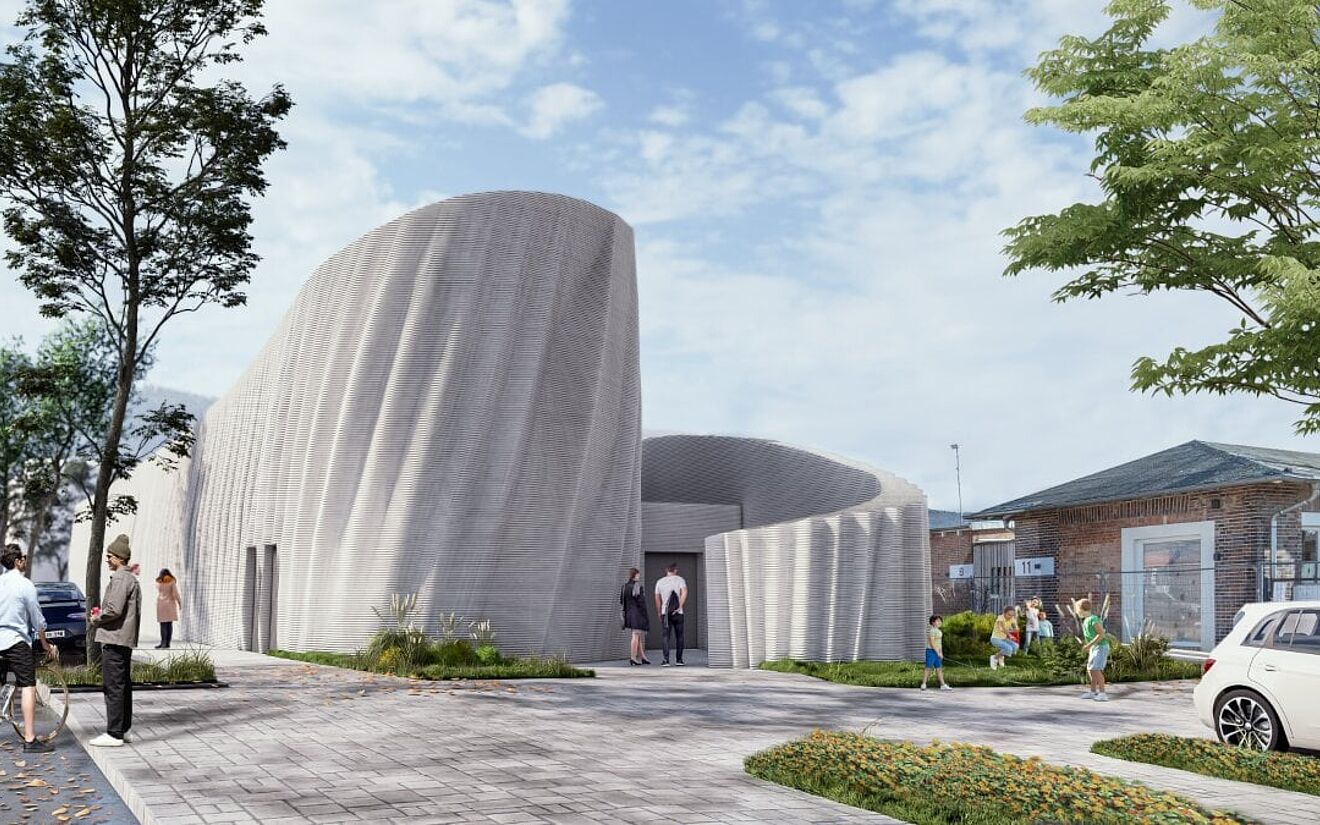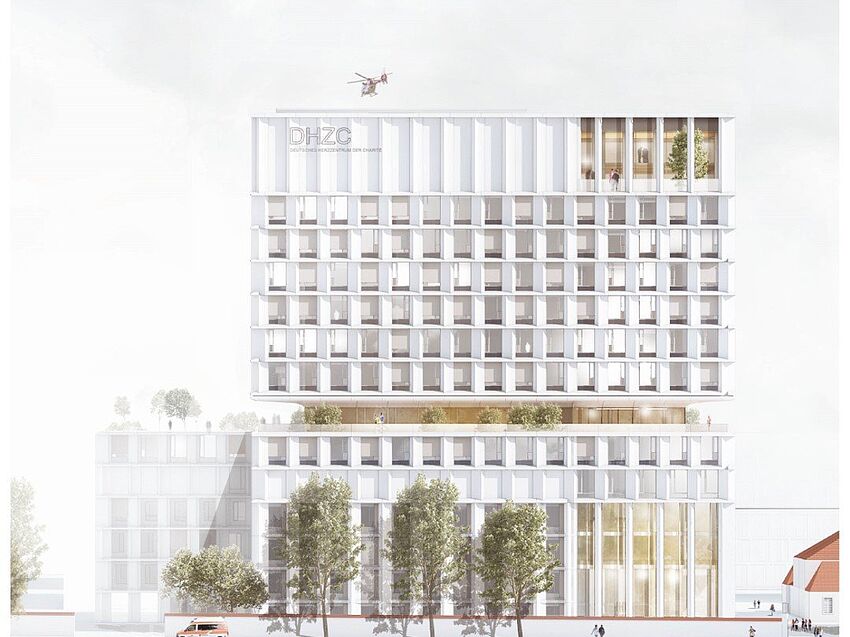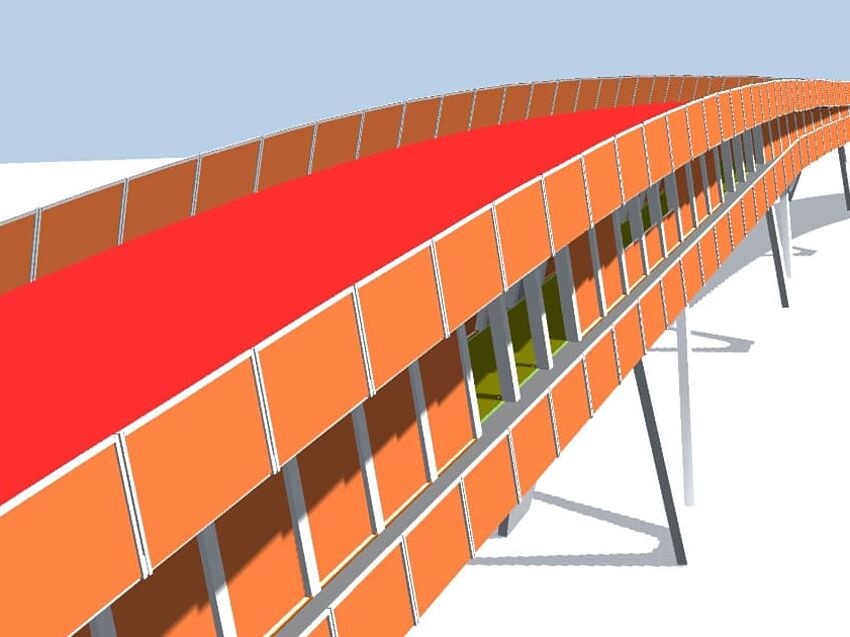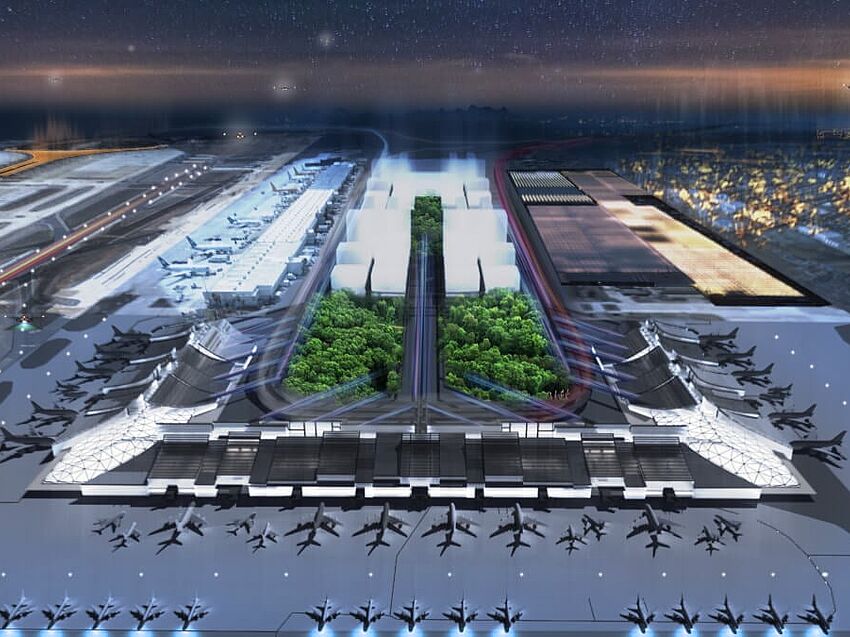After delivering Germany's first printed house, Mense-Korte are now dedicating themselves to Europe's largest printed building – with at least one further development of the 3D printing process.
Mense-Korte ingenieure + architekten are the German pioneers of 3D printing in construction and best known for Germany's first 3D-printed house. In Heidelberg, their expertise in additive construction is now in demand for another pioneering project. Together with SSV Architekten, they are handling the planning and construction supervision for the printing of a server hotel for Heidelberg iT. Using 3D printing technology for industrial construction is a world first. At the same time, this is Europe's largest printed building to date. For the architects, the project offers the opportunity to further explore the potential of the new construction method. In at least one respect, the process has already been further developed since the house in Beckum.

170 hours printing time for shell
The new building is an impressive 54 meters long, 11 meters wide, and 9 meters high. Printing has been underway since March 31, and the shell of the building is scheduled to be completed by the end of July. According to the client, KRAUSGRUPPE (of which Heidelberg iT will be a tenant), the pure printing time is only 170 hours, while only two construction workers are needed on the building site. According to architects Waldemar Korte (Mense-Korte) and Jan van der Velden-Volkmann (SSV Architekten), this construction method requires considerably more discipline. However, the special appeal of this technology is that freeforms can be generated much more cost-effectively via 3D printing than with other construction methods and materials.
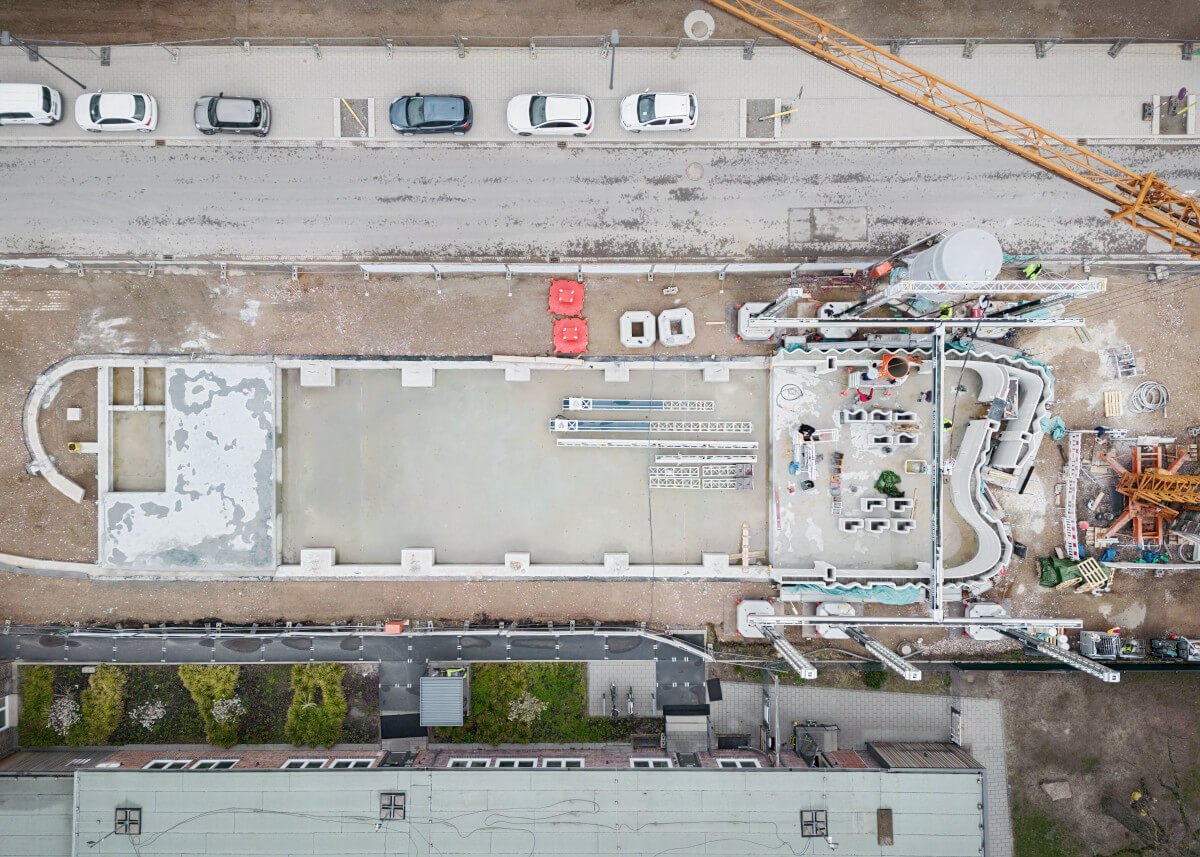
Old friends: Planning in ALLPLAN again
Old acquaintances who already played an essential role in the Beckum house are once again involved. On the one hand, this is PERI 3D Construction with their huge COBOD BOD2 printer, which prints the vertical elements of the structure. In fact, Germany's first printed public building (in Nordkirchen, North Rhine-Westphalia) is already the next major print job in the pipeline for the company.
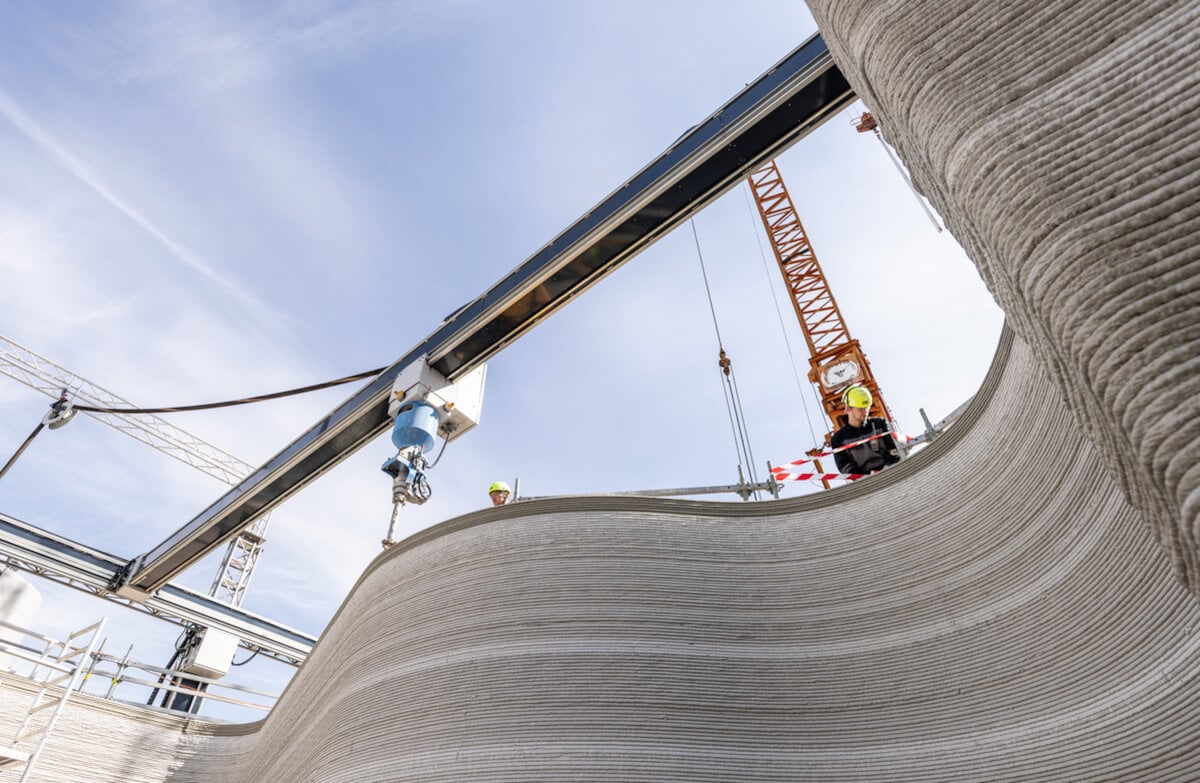
Heidelberg Materials (formerly HeidelbergCement) is also back as a manufacturer of the printing medium. The latter has meanwhile been greatly improved, particularly regarding its environmental impact. According to the company, the 3D printed concrete used for the first printed house in Germany was already 100 percent recyclable. Heidelberg is now using a new mix in which a special binder also ensures a reduction in CO2 emissions of around 55 percent compared with Portland cement.
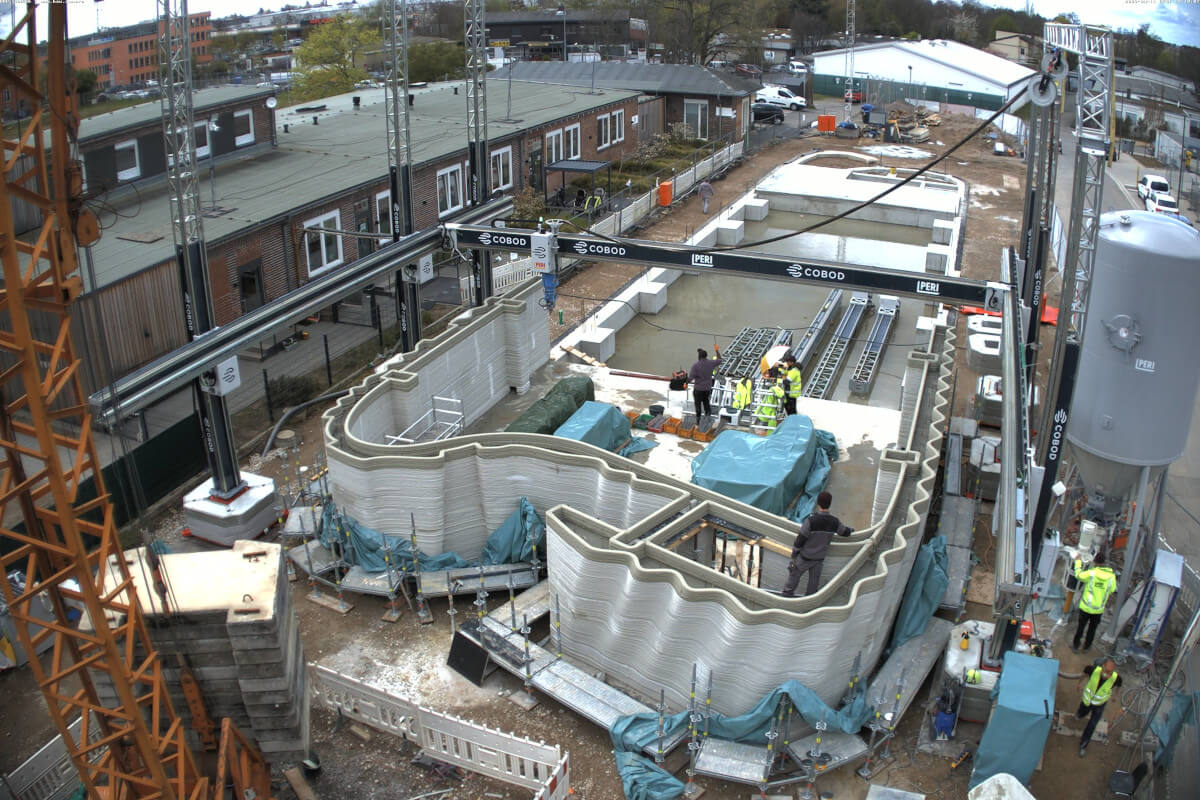
And one more thing remains the same: Mense-Korte once again relied on ALLPLAN for the design of the industrial building.
